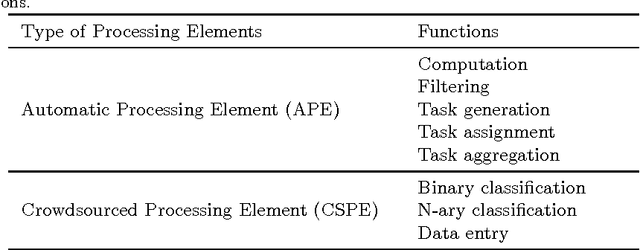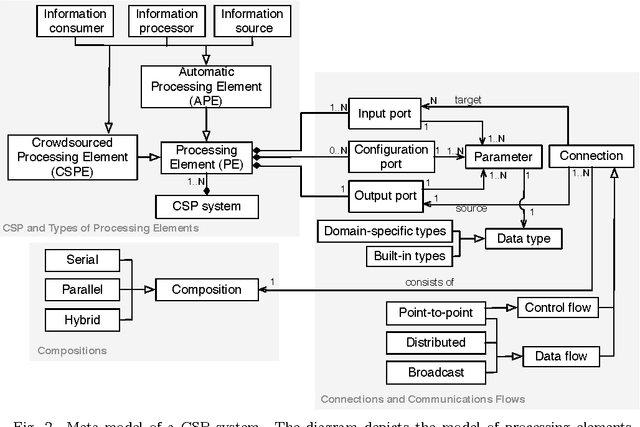Engineering Crowdsourced Stream Processing Systems
Paper and Code
Aug 04, 2014



A crowdsourced stream processing system (CSP) is a system that incorporates crowdsourced tasks in the processing of a data stream. This can be seen as enabling crowdsourcing work to be applied on a sample of large-scale data at high speed, or equivalently, enabling stream processing to employ human intelligence. It also leads to a substantial expansion of the capabilities of data processing systems. Engineering a CSP system requires the combination of human and machine computation elements. From a general systems theory perspective, this means taking into account inherited as well as emerging properties from both these elements. In this paper, we position CSP systems within a broader taxonomy, outline a series of design principles and evaluation metrics, present an extensible framework for their design, and describe several design patterns. We showcase the capabilities of CSP systems by performing a case study that applies our proposed framework to the design and analysis of a real system (AIDR) that classifies social media messages during time-critical crisis events. Results show that compared to a pure stream processing system, AIDR can achieve a higher data classification accuracy, while compared to a pure crowdsourcing solution, the system makes better use of human workers by requiring much less manual work effort.
 Add to Chrome
Add to Chrome Add to Firefox
Add to Firefox Add to Edge
Add to Edge